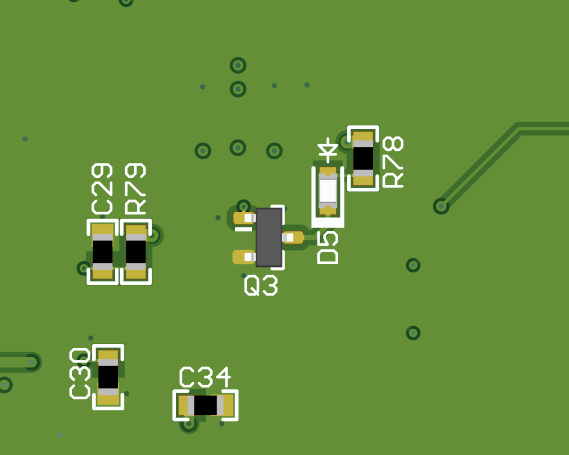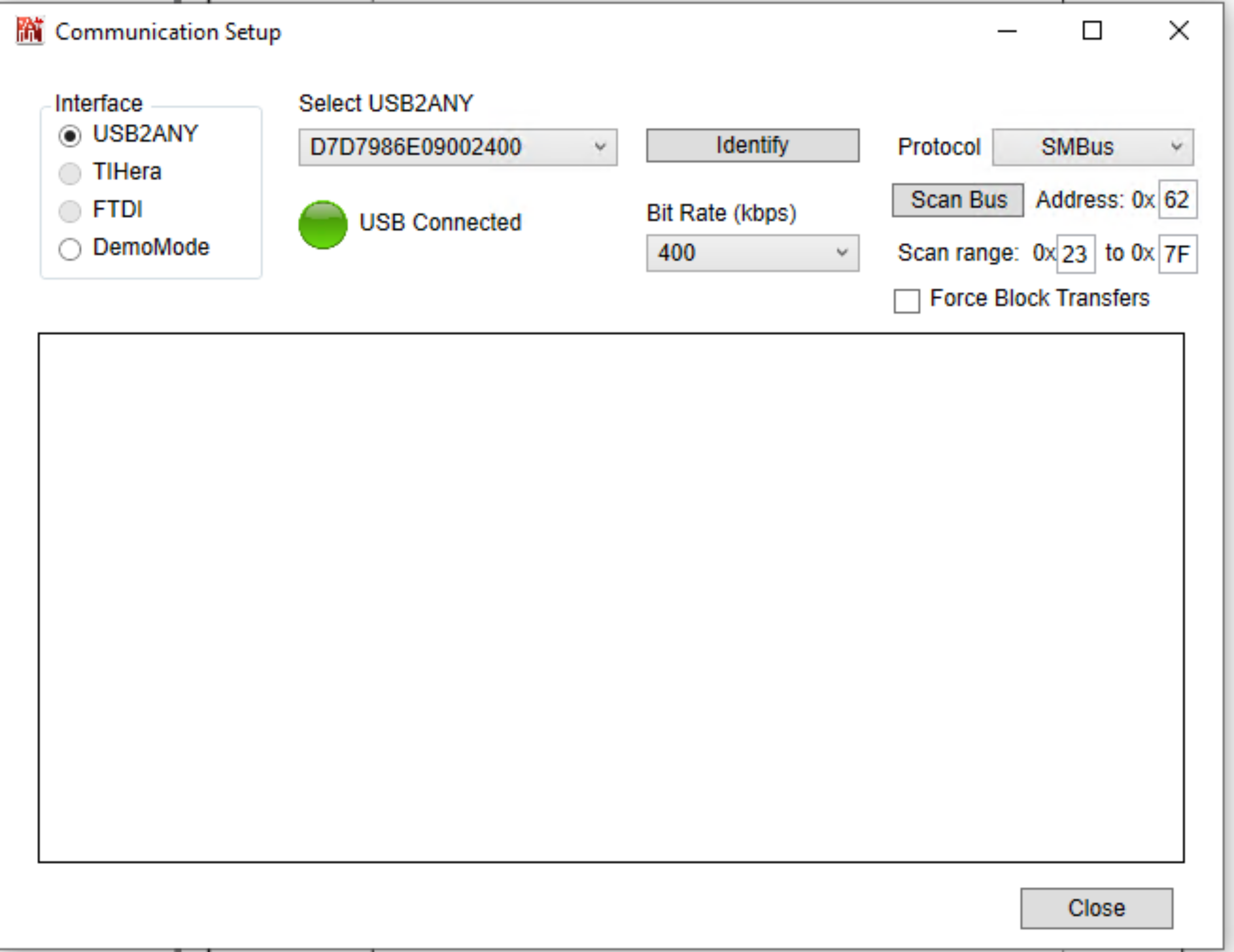SNAU306 June 2024 LMKDB1104
2.2.1 TICS Pro GUI Setup
- If not already installed, then install TICS Pro software from TI website: TICS Pro Software GUI.
- Start TICS Pro software.
- Make sure the steps under Section 2.1 have been completed before performing this step. Select the LMKDB1104 profile from Select Device → Clock Distribution with Divider → LMKDB1104.
- Confirm communication with the
board as follows:
- Click USB Communication from the menu bar.
- Click Interface to launch the Communication Setup pop-up window.
- Confirm following field
the Communication Setup pop-up window:
- Make sure USB2ANY is selected as the interface.
- In case of multiple USB2ANY, select desired interface. If a USB2ANY is currently in use in another TICS Pro, then the user must release that interface by changing the interface setting to DemoMode.
- Click Identify to blink LED shown in Figure 3-1. After clicking the Identify button, the LED flashes quickly at about 0.5 second on, 0.5 second off for about 5 seconds. This confirms the connection to the board. However, be aware that USB2ANY devices connected to the PC, but not attached to a TICS Pro instance, can blink at a slow rate of 1 second on, 1 second off continuously.
- Confirm all the fields match the ones shown in
Figure 3-2.
 Figure 2-1 USB
LED
Figure 2-1 USB
LED Figure 2-2 Communication
Setup
Figure 2-2 Communication
Setup